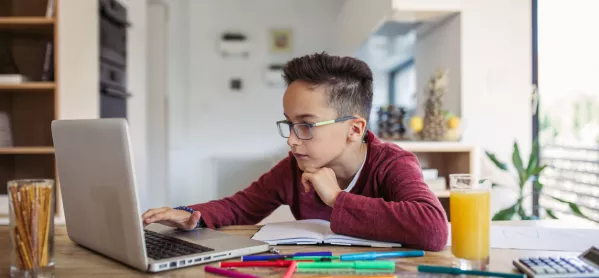6 ways we’ve adapted to set exams remotely

Remote learning since March 2020 has meant rethinking the ways that we assess children in preparation for exams.
In our school, Year 6 pupils who have their Checkpoints in April are now being assessed remotely, and no doubt international schools that use IGCSEs and IA levels are also adopting similar plans.
Even schools planning to issue teacher-assessed grades will no doubt be finding ways to assess students remotely to help with their scoring.
Six tips for remote exams and assessment
Here are some of the ways that we have adapted our remote exam practice to help make this process smoother.
1. Move the preparation to two year groups
Having completed the analysis of our most recent results, it was unsurprising that lockdown had an effect, although not as much as we had expected.
One decision we made was to involve our Year 5 team more overtly in preparing their children ready for the Checkpoint exams in Year 6.
This has involved using questions from previous papers to assess understanding at the end of relevant maths and science units, in particular, to ensure that children have gained a sufficiently deep knowledge of the terminology being used and how to apply it.
If the children in the year group prior to the exam are more aware of what is expected of them, there is greater empowerment of the teachers involved and more of a sense of collective responsibility for the outcome.
2. An extra slide?
Of course, setting exams remotely is a very different task than doing it in school.
Even issues like where they write their answers for submissions requires some thought.
As a school that uses Google Classroom, we have made use of Slides when undertaking practice questions: this way, we are able to assign students specific space on a single document.
It also means that if they need extra space (another Slide), they can ask for it, as they would ask for paper in an exam; and using the Slide Sorter view, we can check that everyone is working on their own part of the document.
3. Cameras on or off?
Another issue is how to monitor pupils during an exam.
There are a range of safeguarding and privacy concerns associated with online learning, plus we are not always aware of our students’ home circumstances.
We must bear in mind personal and cultural sensitivities - everyone’s space is being invaded at the moment.
We made the decision not to insist on cameras being on for the primary pupils, but rather to focus on their output, as this is the first time that we have used this approach.
4. Combating the temptation to cheat
In order to manage issues of cheating, questions were assigned at the time of the exam, reducing the chance of students researching while working.
All of the year group work on the questions at the same time, with each teacher invigilating their own class, tracking what is happening through Slide Sorter and using the plagiarism checker to ensure that sentence constructs are original.
As these are mock exam conditions, students ask permission to go to the bathroom, with no more than one from a class going at the same time.
Parents are also politely requested not to help their children. With most parents finding it a challenge to work from home, we have not found this an issue.
5. Vary your techniques
The technology available allows us to use a mixture of techniques and engage students to check for deep learning.
This can take place through retrieval practice questions to check for understanding, self-marking quizzes in Google Forms or timed short and long answer questions.
None of these are new; we are simply doing them in new ways.
Is one potential difference a greater openness about what is required to gain the requisite number of marks?
This was possible before, of course, but Microsoft Teams and Google Classroom have created less variation through the use of their marking rubrics.
Students can see the criteria in front of them and self-assess before submitting their work.
There is also the use of breakout rooms - setting students a problem or area to research, then assigning them into groups and sending them off into virtual “rooms” to discuss or prepare a presentation for the rest of the class.
This is produced as part of their assessment - in the International Primary Curriculum, for example, students self-assess using their own rubrics, giving additional ownership.
6. Old ways have their place
While I am an advocate for the benefits of technology, good handwriting and presentation of writing is vital, too.
As such, the benefits of getting students to hand-write and upload their responses should not be overlooked - it is invaluable for spelling practice as it helps students to form and develop a mental schema that will help them to remember how to spell each word.
Linking this to associated written activities - breaking the words into sound chunks; generating word webs; writing definitions, etc - also helps to improve fine motor skills and concentration.
Chris Barnes is head of Year 6 at Crescendo-HELP International School, Johor Bahru, Malaysia. He tweets as @MrBarnesTweets
You need a Tes subscription to read this article
Subscribe now to read this article and get other subscriber-only content:
- Unlimited access to all Tes magazine content
- Exclusive subscriber-only stories
- Award-winning email newsletters
Already a subscriber? Log in
You need a subscription to read this article
Subscribe now to read this article and get other subscriber-only content, including:
- Unlimited access to all Tes magazine content
- Exclusive subscriber-only stories
- Award-winning email newsletters
